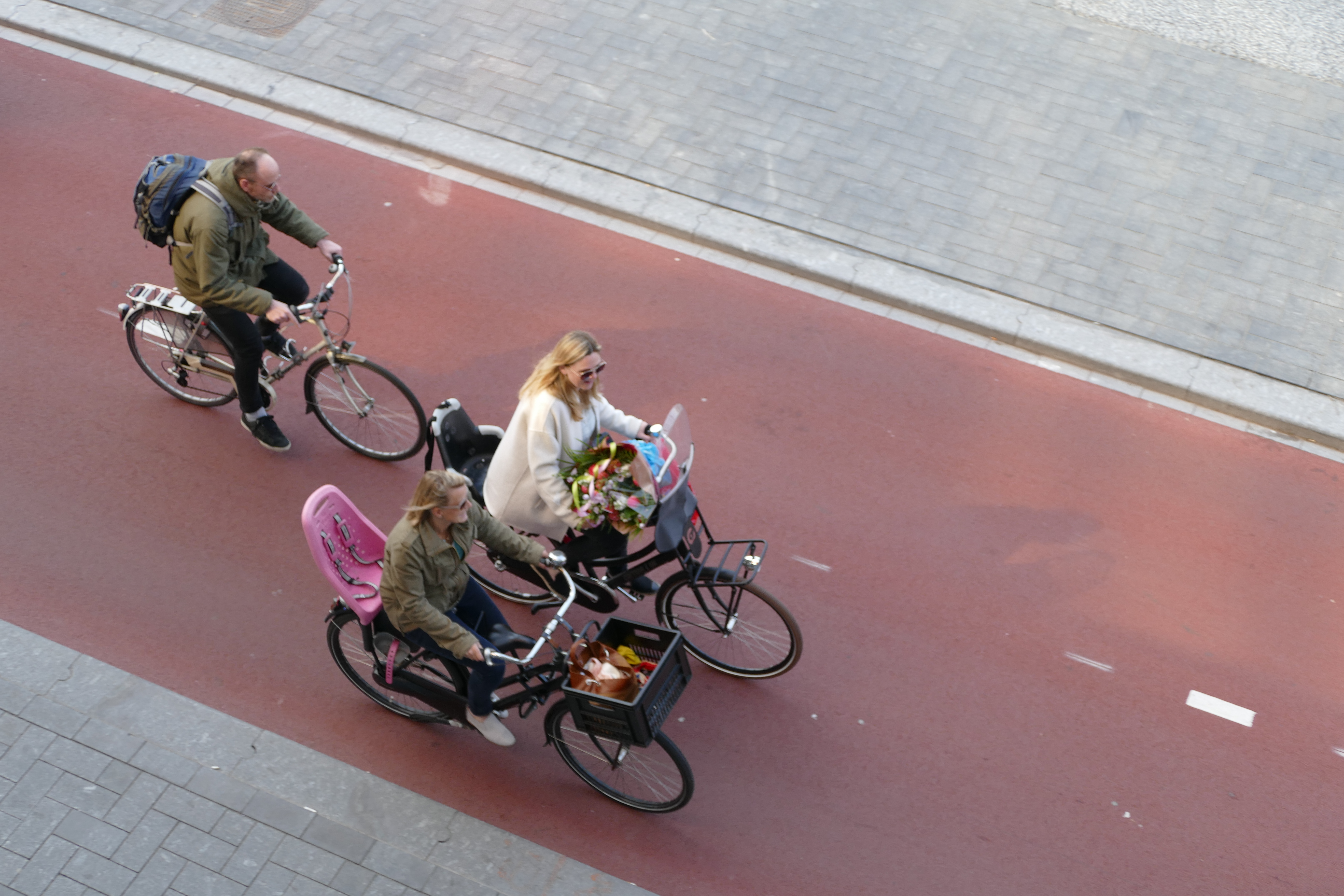
- Better Society -
- 7mins -
- 1,506 views
How the Dutch save lives (and billions) by cycling
When it comes to modes of transportation, the Dutch know that cycling is undoubtedly the best for your health, for your wallet, for the environment, for everything!
Pedal-power in the Netherlands saves lives and saves money
The fact that cycling is better than taking the car might seem obvious, but you may not be aware of all the benefits and ways in which biking is better and awesome in itself. Those clever folks in the Netherlands certainly push pedal-power to the max for all the benefits it has to offer.
Per year, the Dutch cycle about 17.6 billion kilometres (11 billion miles), averaging 880 kilometres (547 miles) per person. The Netherlands invests over $600 million (€517m) annually in bike infrastructure, but that pays for itself in health, social and other benefits. Almost a quarter of all trips are made by bike in the Netherlands, and this preference for biking could save its economy €19 billion ($22 billion) each year.
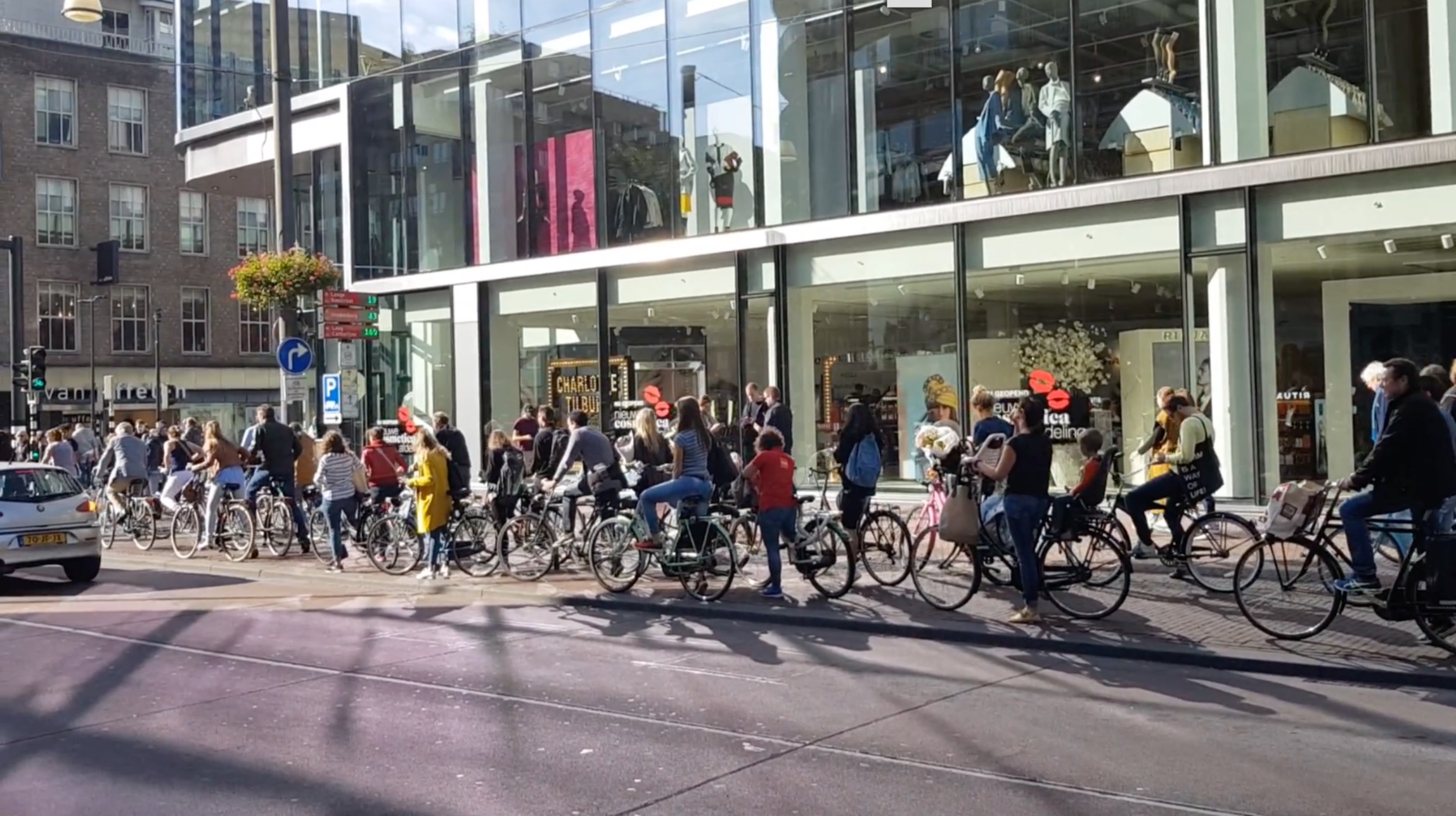
Facts about cycling In the Netherlands
- In 2019, the Dutch made 4.8 billion journeys by bicycle, covering 17.6 billion kilometres. This equates to an average of three kilometres of cycling per Dutch person per day.
- Women cycle more than men. In total, women make almost 17 percent more bicycle trips per year (2.4 billion compared to 2.0 billion).
- Children have a higher share in the number of trips than adults. Up to the age of 18, almost half (48%) of all journeys are made by bicycle.
- People between the ages of 30 and 60 make the least use of a bicycle. Once people have passed the age of sixty, they are more likely to mount the steel steed again.
- In the four large municipalities (G4) the bicycle was increasingly used as a mode of transport. Of the four major cities, the bicycle is most often used in Utrecht. Due to the presence of a tram and metro system, the share of bicycle users in Amsterdam, The Hague and Rotterdam is lower.
- People cycle most often in Leiden, Zwolle and Groningen. More than half of all journeys within these municipalities are by bicycle. More and more people with a non-Western migration background also use the bicycle, but less often than other Dutch people.
Employers
- 10-15% of employers have improved parking, facilities and bicycle purchase fees in the past year. A comparable share expects to do this (also) in the coming year.
- 51% of employers offer compensation for the purchase of an (electric) bicycle.
- In May 2019, five months after the introduction, 10% of employers made use of the bicycle lease scheme.
Source: Stadszaken.nl
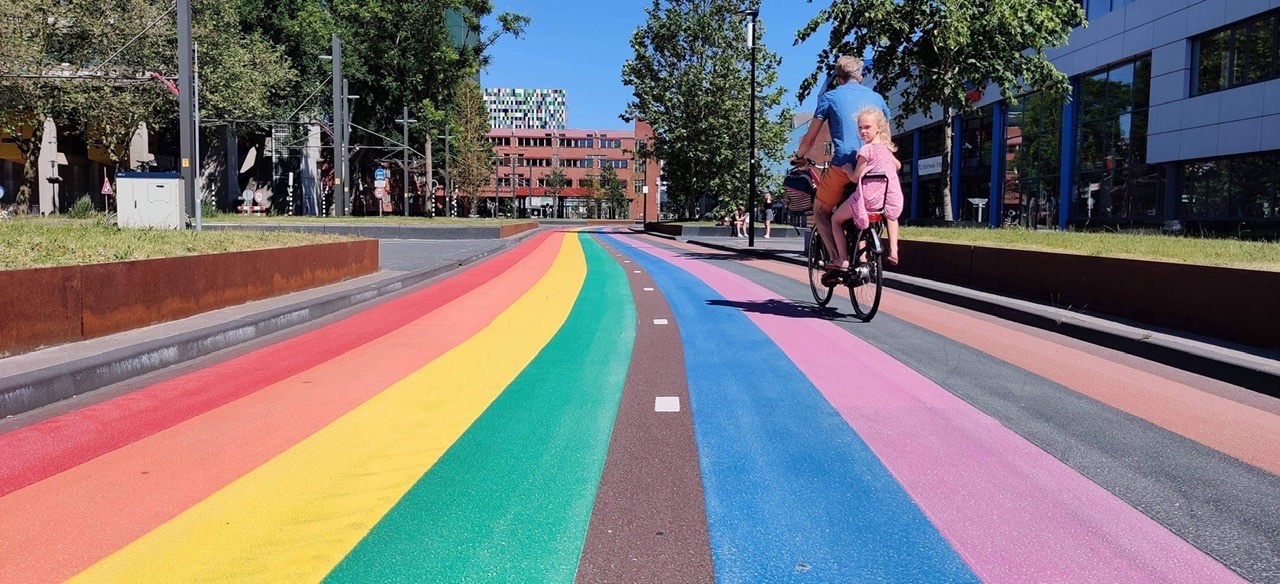
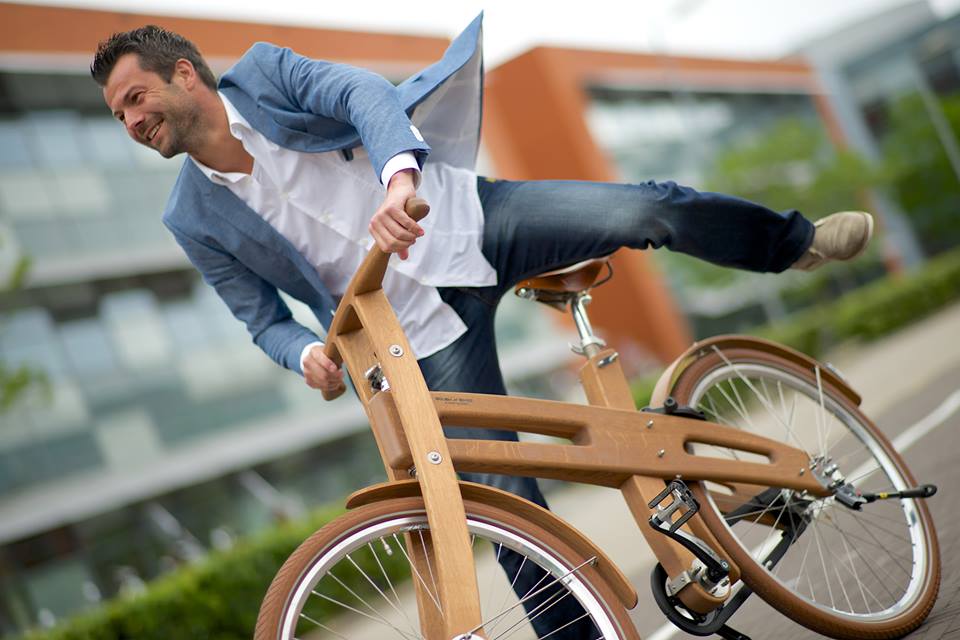
Corona Virus and electric bikes — facts and figures
Corona
Bicycle use (rides per person per day) remained fairly stable during the start of the corona crisis compared to the period before. The opinion about the bicycle has not suffered from the corona crisis and has remained fairly stable in recent months.
About 37% of people who make less use of the bus, tram or metro (BTM) as a result of corona use the bicycle more often instead; for the train, this is the case for 14% of the passengers. This difference can partly be explained by the journey distance: BTM journeys are often shorter than train journeys and therefore easier to replace by bicycle.
Of the people who have switched from public transport to cycling as a result of the crisis, the majority (72%) indicate that they are happy with this. Although most people expect to return to their old behaviour after corona, it appears that a quarter of people will choose to cycle and walk more often.
Electric bikes
In 2019, 18% of bicycle journeys were made by electric bicycle and more than a quarter (26%) of bicycle kilometers were covered by electric bicycle. This amounts to more than 700 million e-bike journeys, covering more than 4.1 billion km. In 2013, it was still about 8% of the trips and 12% of the cycling distance.
The total distance traveled by e-bike has increased in all age groups. Although the electric two-wheeler is still most popular among the over-65s, the share of electric bicycle kilometers traveled by people under the age of 65 is growing fastest.
E-bikes play a greater role in all bicycle journeys for women than for men. In 2019, women made about 85% more trips by e-bike than men (456 million compared to 245 million).
Men, on the other hand, cycle further on average per e-bike journey (7.9 versus 4.8 km). The difference in distance traveled is therefore smaller than in the number of trips. In 2019, women covered about 14% more distance on an electric bicycle than men (2.2 billion versus 1.9 billion km).
An average journey with a non-electric bicycle is about 3.6 kilometers long, that with an electric variant about 5.9 km. People aged 75 and older, on average, cover the longest distance per trip (7.2 km). This is because they use the bicycle with battery relatively often for touring.
The number of new electric bicycles sold has grown considerably in recent years. In 2013, fewer than 200,000 new e-bikes were sold, in 2019 there were more than 420,000. More than four out of ten new bicycles sold are now electric.
Since the outbreak of the corona crisis, the sale of electric bicycles has increased. In May 2020, sales of electric bicycles were 38 percent higher than a year earlier.
Source: Stadszaken.nl
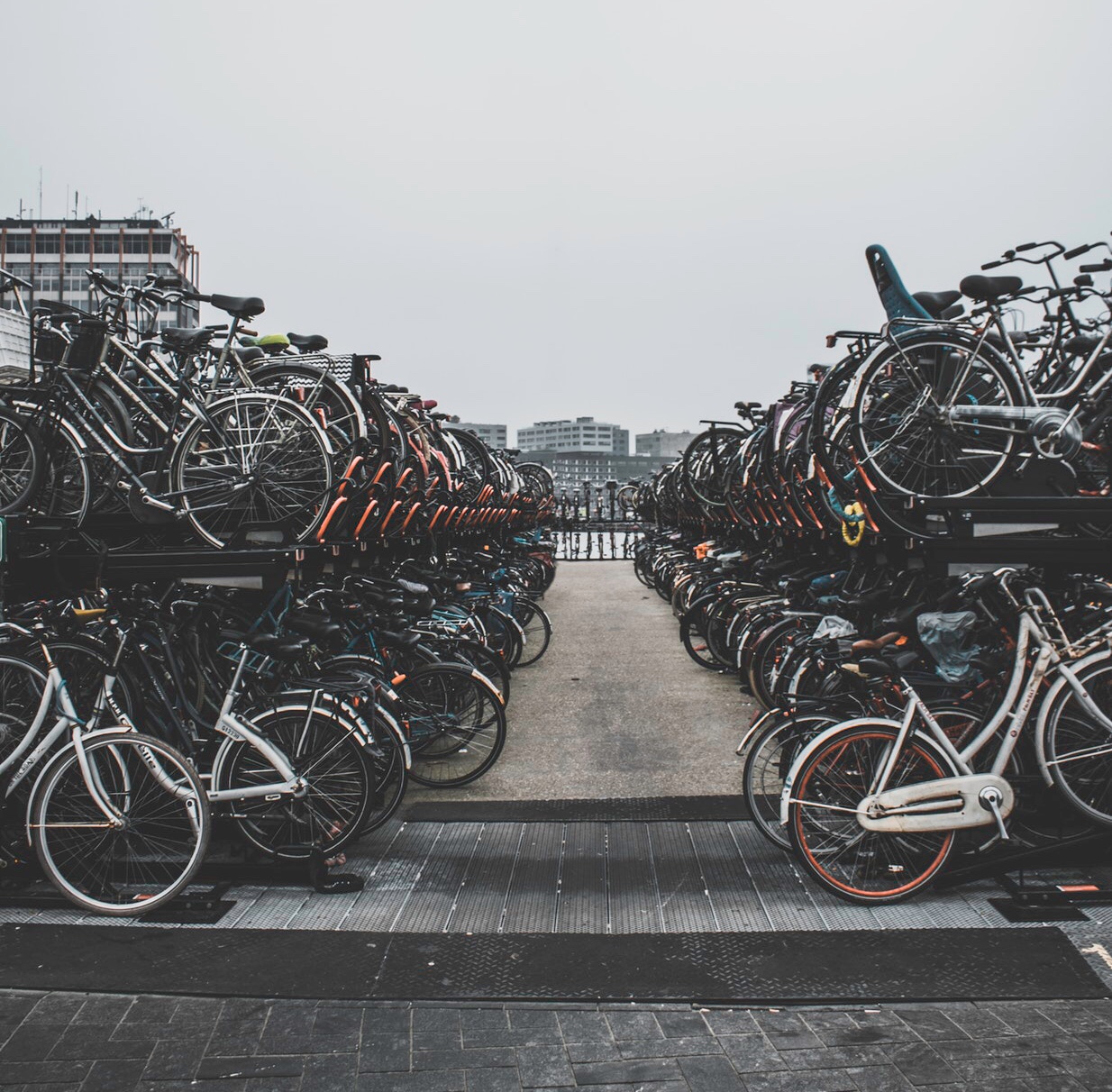
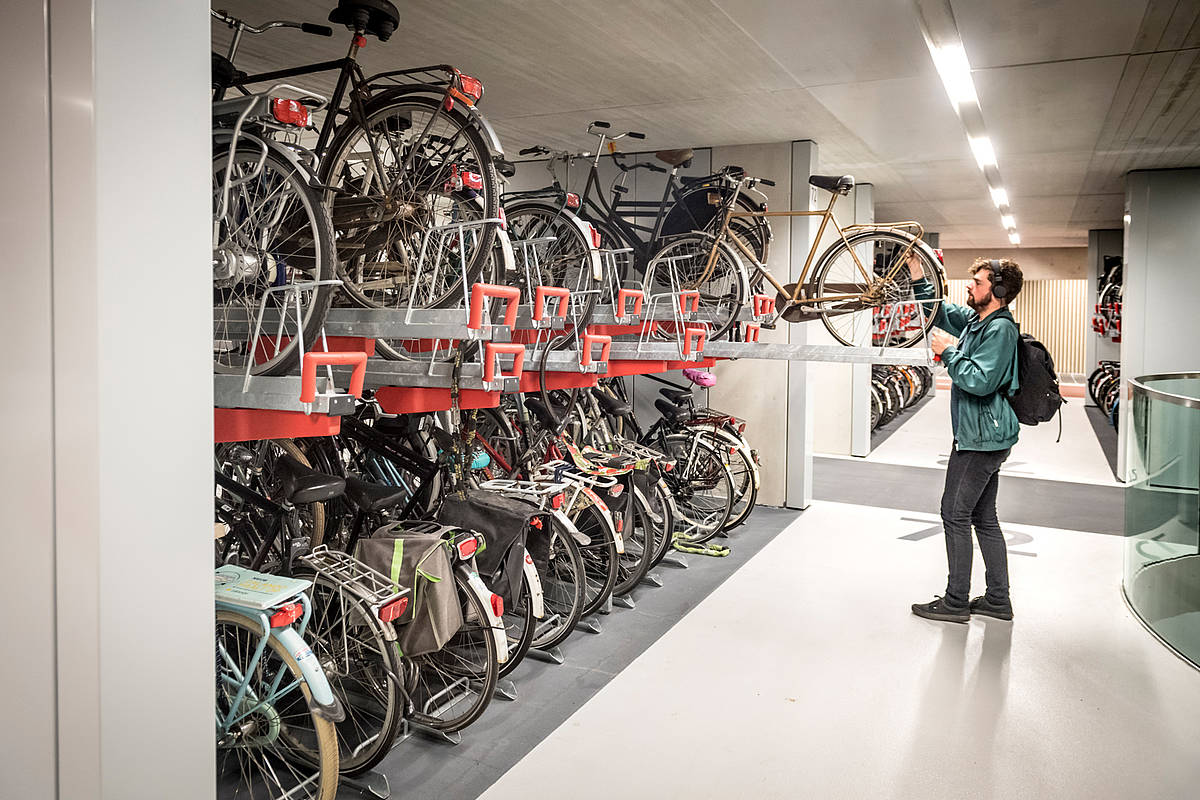
Dutch Cycling in numbers
There is a lot of cycling in the Netherlands. In no other country with a comparable level of prosperity is so much cycling. Here are some of the most striking, interesting and recent figures in the field of cycling.
What are the busiest bike paths?
A jumble of cyclists ride at the Smakkelaarsveld in Utrecht. The point is one of the busiest cycling routes in the Netherlands, thousands of cyclists pass through the intersections. Image author: Bas de Meijer
The busiest bicycle paths in the Netherlands can be found in Utrecht, and are all located in the center of that city.
- Smakkelaarsveld, Utrecht
- Vredenburg, Utrecht
- Jaarbeursplein, Utrecht
- De Ruiterkade, Amsterdam
- Weesperzijde, Amsterdam
- Grote Markt, Groningen
- Van Diemerbroeckstraat, Nijmegen
How fast does a cyclist cycle on average?
The average speed of cyclists in the National Bicycle Counting Week in 2016 was 15.8 kilometres per hour. Cycling is slower in the major cities than outside of it, especially in Amsterdam (14.4 km/h) and Utrecht (14.7 km/h). There are also differences per province. In Fryslân people cycle the slowest at 15.1 km/h, in Zeeland the fastest at 16.6 km/h.
How many bicycle accidents occur every year?
That is a difficult question to answer. Not all accidents are registered. We know that in 2015, 185 cyclists died in an accident. The number of cyclists who were seriously injured in that year is estimated by the Road Safety Research Foundation at around 10,000, half of the total number of road injuries.
How many bicycles are there in the Netherlands?
According to the latest estimate from industry associations BOVAG and RAI, there are 22.8 million bicycles in the Netherlands. This means that every Dutch person owns more than 1.3 bicycles, which is unique in the world. 1.8 million of these bicycles are electrically assisted. The number of speed pedelecs (fast electric bicycles) is slightly above 14,000.
How many kilometers of cycle paths are there in the Netherlands?
The Netherlands has 37,000 kilometers of bicycle paths. That is more than the previous estimate of 29,000 kilometers from the Dutch Cyclists’ Union from 2009 and much more than the last figure, 17,000 kilometers from Statistics Netherlands, from 1996. The number of kilometers of roads with bicycle lanes is 4,700 kilometers, the same as the earlier estimate.
The new figures come from the Fietsersbond Routeplanner, which has become nationwide and includes every bicycle path. This provides the Fietsersbond with reliable information for all provinces.
Source: Fiestersbond.nl
